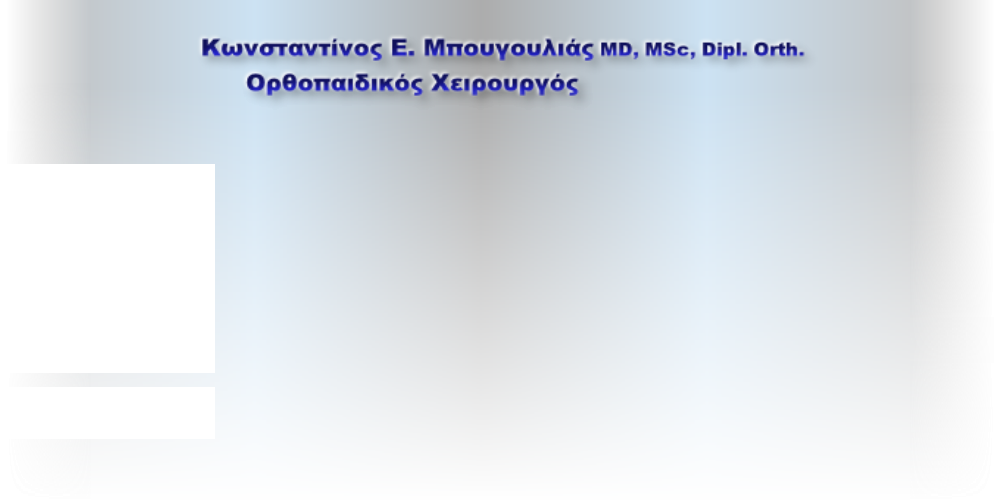


Κωνσταντίνος
Ορθοπαιδικός
Bougoulias.com | © 2022 | All rights reserved
Μπουγουλιάς
Χειρουργός
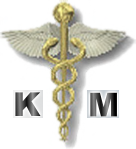




The latest HTML5, CSS3 and advanced JavaScript have
been used to ensure the highest compatibility.




Measuring the effect of tyre pressure on the power, energy and Efficiency of propulsion of an ultra light wheelchair. A sports Disability study.
K. Bougoulias, MSc in Sport and exercise Medicine UCL
Royal National Orthopaedic Hospital, Stanmore.
Abstract
The study took place in the disability lab and the aim was to prove that the tyre pressure really makes a difference in the energy that is required to propel a wheelchair. The result was based in the measurement of the external power [Po], internal power [En] and gross mechanical efficiency [ME%=Po/En %] after a six times repeated test run (three times with tyres normally inflated and three times with tyres deflated).There was a statistically significant difference in those two conditions.
Introduction
Wheelchair locomotion is an important form of mobility for many individuals with spinal cord injuries. However, manual wheelchair propulsion can lead to upper –limb pain and possibly early degenerative changes to the upper limb joints due to overuse. On the other hand, manual wheelchairs can not easily be replaced by automatic ones, because they are a necessary motivation to paraplegic people for exercising.
Biomechanical studies in wheelchair sports mainly aim at optimising sport performance or preventing sport injuries. The sports performance optimisation has been approached from an ergonomic, as well as skill proficiency perspective. Sports medical issues have been addressed in wheelchair sports mainly because of the extremely high prevalence of repetitive strain injuries such as shoulder impingement, rotator cuff tears, aseptic necrosis and carpal tunnel syndrome.
Wheelchair propulsion is an action that can be defined, affected and measured through kinematics [capture of motion], kinetics [recording of forces/moments], energetics [cardiorespiratory,metabolic], electromyography [surface EMG, nerve conduction studies], imaging [Xrays, MRI] and physical exam [history, ROM, pain].
The hypothesis of this study is that there are differences in the power, energy and mechanical efficiency of submaximal aerobic propulsion of an ultra light wheelchair when the tyres pressures are fully inflated and when deflated.
Materials and methods
One no paraplegic, no wheelchair permanent user, right handed 35 years old male took part in the study.
It was used one ultra light weight wheelchair. This kind is a lighter, low rolling resistance because most of the user`s energy goes into forward propulsion and is not lost in the flexing of the wheelchair frame. The tests took place at the strip of tarmac outside motion analysis laboratory in Royal National Orthopaedic Hospital. The length that was run by the individual was the same for all tests, 80m.
A plastic bag with bag valve, one way breathing valve mouthpiece, gas analyser and a spirometer were used for measurement of oxygen consumption. Measurement of wheelchair acceleration and velocity were done by a three axis [x, y and z] accelerometer [Crossbow CXL 04M3] connected to remote data logger [TT8]. The position of the accelerometer was on the chair just behind the axle height with x direction facing forwards. The weight of the wheelchair and the user was measured 100.9 Kg.
There were two test conditions:
1. Tyres normally inflated
2. Tyres deflated.
It was measured for each condition:
1. Drag force
2. Tyre pressure
The individual propelled the wheelchair 3 times per condition at constant velocity 4 Km/h or 1.11 m/s.
The bag valve was opened to allow the air to exit bag. When all air had been expelled from Douglas bag, the valve was closed and connected with the mouthpiece. The individual breathed into mouthpiece with Bag valve open to atmosphere only, so, no air entered bag. He did one minute relaxed breathing. When subject relaxed, the bag valve was opened, so the expired air entered the bag only. After two minutes the bag valve was closed again, so no air could enter bag and all expired air went to atmosphere. That was the collection during resting.
We repeated the collection during wheelchair propulsion on test track. An assistant was holding the bag The subject run one length of test track having the bag valve open to atmosphere only. The valve was opened, so the air entered bag only and after two lengths of test track the bag valve was closed again, so all expired air went to the atmosphere.
Positioning the accelometer on the chair and before each test programme the data logger with a filename was written and was left in prime mode. After one length of the test track data logger was started.
After two subsequent lengths of the test track the wheelchair and the user were kept stationary and data was recorded for 30 sec.
One litre of air from Douglas bag passed through the analyser using a syringe and compared with one litre of pure nitrogen and one litre of ambient air passing through the analyser as well.
All the above analysis was done for each single test.
Results
Test 1 2 3 for condition 1 with tyres normally inflated
Test 4 5 6 for condition 2 with tyres deflated
Oxygen content measured using gas analyser
1. Tyres normally inflated: Left, 46psi ; Right 48 psi
2. Tyres deflated: Left, <0 psi ; Right <0 psi

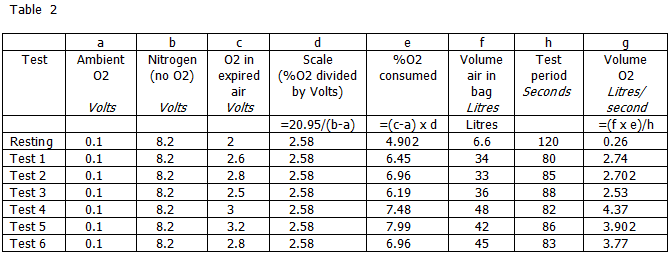
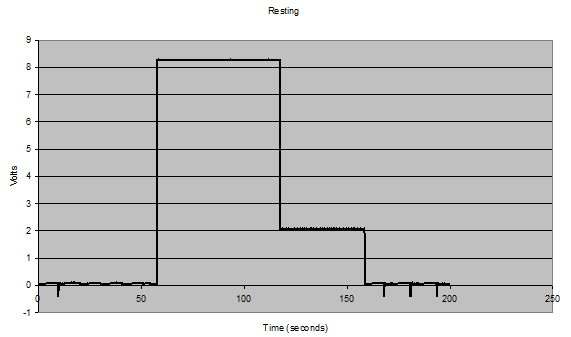

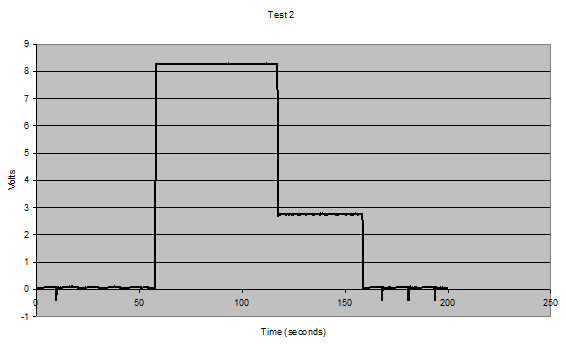

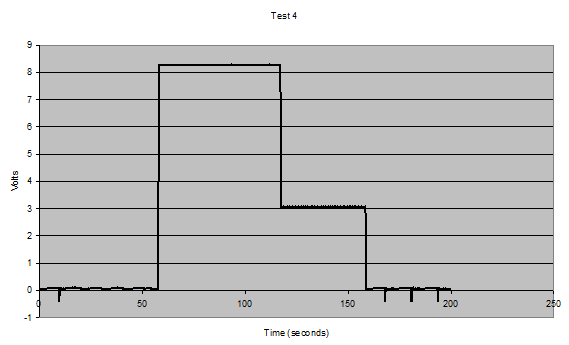
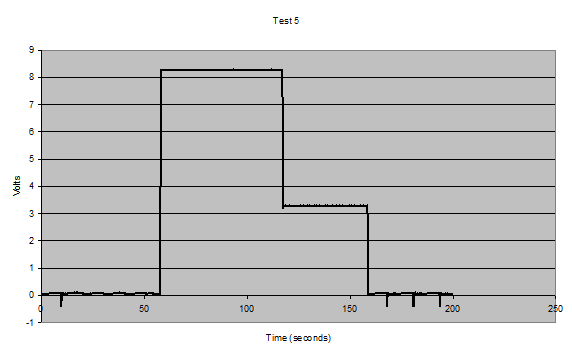
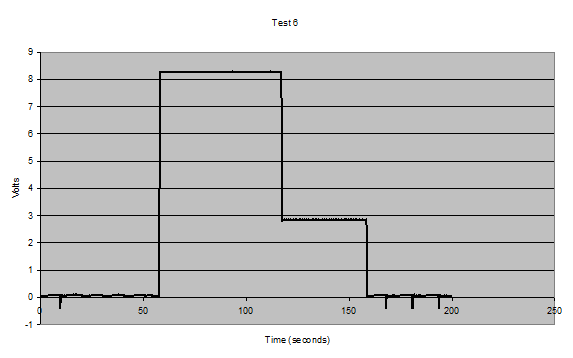
Data analysis
In order for the wheelchair to be kept at a constant velocity, the user has to produce a certain amount of energy per unit time, or power. This is called the external power, Po. This external power is produced by the user and requires a much higher amount of internal power, En. The external power output is necessary to overcome energy losses in the system due to drag and accelerating the mass of the chair.
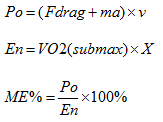
where
Po is the average external power output during submaximal wheelchair propulsion, Watts (W).
Fdrag is the drag forces the wheelchair encounters including rolling friction, air resistance, internal friction, and gravitational effects of any slope if present, Newtons (N).
ma is the mass, m, multiplied by the acceleration, a. Newtons (N).
VO2 is the amount of oxygen consumed during the exercise period, litres per second.
X is the amount of energy liberated from one litre of oxygen consumed, depending on respirator quotient RQ value, where:
RQ = Concentration of CO2 produced / Concentration of O2 consumed. As we have not measured CO2 produced we will assume for our tests a RQ value of 0.85. Thus one litre of oxygen consumed yields 18,270 Joules of energy.
En is the amount of internal power produced, Joules per second or Watts.
ME is the gross mechanical efficiency and is the ratio of externally produced energy (power out, Po) and internally liberated energy (En, i.e energy cost under submaximal, physiological steady state conditions.

Discussion
It is obvious that the energy which is required for wheelchair propulsion is more when the tyres are deflated [table 3, Po-
On the other hand, it can be easily understood how significant is the risk of overuse injuries in an individual who is not careful about tyre pressure on top of wrong choice of type of wheelchair. Tyre pressure should be checked regularly [weekly] and a tyre pressure gauge should be a necessary equipment. There is also the alternative of digital tyre inflator with specially designed high speed pump which inflates all tyres to the correct pressure automatically. The correct pressure is the one in accordance with manufacturer’s specification
Literature
1. Rony A Cooper,PhD; Carmen P Di Giovine,PhD; Michael L Boninger,MD; Sean D Shimada,PhD; Alicia M Koontz,PhD; Mark A Baldwin,MS -
2. Mark Schmeler,MS,OTR/L,ATP;Mary Ellen Buning,MS,OTR,ATP – “Manual Wheelchairs: Set Up & Propulsion Biomechanics” Center for assistive Technology,UPMC Healyh System Department of rehabilitation science & technology University of Pittsburgh
3. Vanlandewijck Y; Theisen D; Daly D –“Wheelchair Propulsion biomechanics ;implications for wheelchair sports” Faculty of physical education and physiotherapy, Katholieke Univestiteit Lenven, Belgium, Journal of Sports Medicine.












